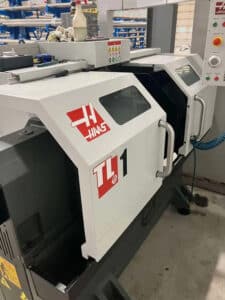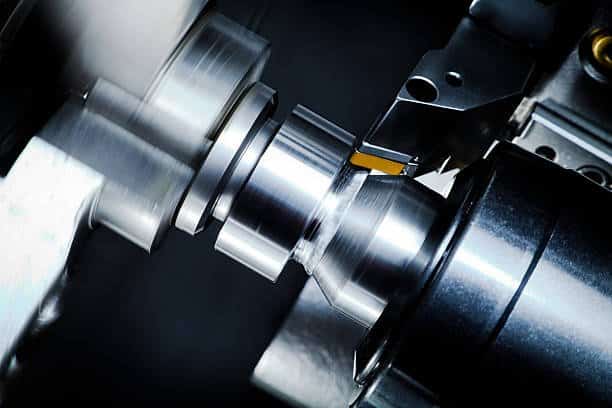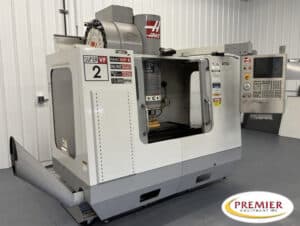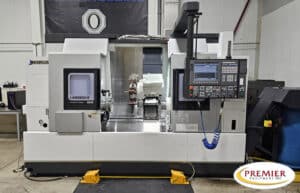CNC Lathes have arguably entered legendary status, as they were among the first metalworking machines. Frequently referred to as “the mother of machine tools,” CNC lathes are “turning” machines that turn a piece of material, such as a metal or wood, to help create a desired shape. As the material turns on its axis, the laborer or hobbyist presses an abrading or cutting tool into it. If you want to purchase a used CNC lathe but are unsure what is involved, review the following guide! It details how to buy a used lathe to help you make a purchasing decision you are satisfied with for years.
How to Buy a CNC Lathe: Tips to Keep in Mind
Familiarize Yourself With the Types of Lathes
CNC lathes are available in three main types: the traditional engine lathe, mini-lathe, and computer numerical control (CNC) lathe. Traditional engine varieties are generally used for repair work, short runs, and secondary operations, as they were eventually eclipsed by computer numerical control lathes.
CNC lathes remain widely celebrated for their quick turning abilities and precision. Mini lathes work best in small workshops.

If your used lathe needs mainly fall into the ‘repair’ and ‘secondary operations’ categories, the traditional model might be all you require. Should you need a dependable, fast lathe for commercial operations, the CNC version is probably best. If you are mainly a hobbyist and do not have a large amount of space to complete various crafts, the mini lathe could be ideal.
Some more considerations
Application Fit: Evaluate the dimensions and design of your future production items. A Swiss-type lathe produces excellent small parts at high precision while VTL machinery deals with large heavy pieces.
Axes and Live Tooling: The extra C Y B axes plus live tooling lets machines handle multiple operations simultaneously but brings added technical challenges and expenses. Automation: The system can connect to bar feeders, robot cells and pallet systems to support high-volume manufacturing operations.
Budget & Support: Consider all purchase expenses when evaluating a machine including machine price, software, tooling needs, maintenance costs, and nearby technical support.
Consider the Features of the Lathe for Your Specific Needs
Depending on the lathe you purchase, it will come with features that streamline personal and commercial projects. The following components may or may not be perfect for your current needs:
Heavy-Duty Cast-Iron Bed and Base: The heavier the used lathe machine, the deeper the cuts. Those with heavy-duty case-iron beds and bases are also regarded for reducing cutting vibrations, improved rigidity, outstanding precision, and machine longevity compared to those with welded steel bases.
Tailstock: If you opt for a two-axle lathe, it will likely include a chuck, spindle, carriage, and lathe bed. However, this type of lathe might not include a tailstock, or a moveable component that supports your metal or wooden piece on the end opposite the headstock and chuck. The support this feature provides avoids taper issues and chatter marks that impact the piece in question’s appearance and usability.
Removable Ways: Some lathes allow you to take off a few of the ways found below the chuck. Doing so creates a space or gap that makes turning larger diameters possible. If you require clearance for a large diameter, you’ll want a lathe with removable ways.
Steady Rest: This feature includes numerous adjustable jaws that connect to the turning machine’s ways. It provides extra support for your metal or wooden piece.
Types of Lathes Available
| Type of CNC Lathe | Description | Brands |
|---|---|---|
| Slant Bed CNC Lathe | The bed slopes at an angle between 30 and 60 degrees to produce better chip flow and part rigidity. Provides improved chip removal and stronger stability during tough machining operations. The design provides better handling for moving parts into and out of the machine. | Haas, Mazak, Doosan (DN Solutions), Okuma, DMG Mori, Hurco, Hyundai WIA |
| Flat Bed CNC Lathe | The standard bed design features a level flat surface that lies horizontally. The basic setup uses simpler designs and costs less money for simple turning operations. This design works well for turning operations that produce smaller chips and do not need strong machine stability. | Kent USA, SMTCL, Birmingham, Baileigh, Knuth |
| Swiss-Type (Sliding Head) CNC Lathe | The machine uses a sliding headstock design with a guide bushing system to hold long thin parts near the cutting tool. This setup produces many small-diameter parts at high speed. Known for precision and speed. | Citizen (Miyano), Tsugami, Tornos, Star, Nomura |
| Multi-Axis CNC Lathe / Turn-Mill | These machines come with added rotation axes (C, Y, and B) and tool-changing capabilities. One machine can perform milling drilling and turning operations without needing changes which saves production time. Often called “multi-tasking” machines. | Mazak (Integrex series), DMG Mori (NT/NX series), Okuma (Multus), Haas (DS series) |
| Vertical Turning Lathe (VTL) | The machine tool has its chuck mounted on a vertical axis. This setup works best for large heavy components found in automotive and aerospace industries because gravity keeps the part steady. May include live tooling. | Doosan, EMAG, You Ji, Toshiba, Honor Seiki, WIA |
| Horizontal Turning Center | This category of lathes includes both slant and flat bed shapes in its range. The machine typically includes an enclosed space with turret heads plus optional milling axes. Suited for a wide range of parts. | Mazak (Quick Turn), Haas (ST series), Okuma (LB series), DMG Mori, Doosan (Puma series) |
| Gang Tool CNC Lathe | The system uses a gang plate containing multiple fixed tools instead of a turret. The system saves indexing time for small parts that need high-volume production. Common in smaller footprint lathes. | Omniturn, Ganesh, Sharp, Accuway |
| Chucking CNC Lathe | Built to hold work pieces in a chuck without using a tailstock. This lathe handles small pieces without bar feed operations. Often has a larger chuck capacity. | Hardinge, Haas, Doosan, Okuma, Chevalier, Emco |
| Bar-Fed CNC Lathe | The machine works with bar feeders to produce materials without interruptions. The system features an automatic bar loader to handle large part production. This technology appears in both car and healthcare product factories. | Haas (Bar feeder options), Doosan, Tsugami, Citizen, Hardinge |
| Teach/Combination CNC Lathe | The machine features CNC control while keeping manual lathe functions. Educational and small businesses use this machine to combine manual lathe functions with CNC technology. Supports both manual and automated operations. | Harrison (Alpha series), Colchester, EMCO (Concept Turn), Kent USA |
Think Critically About Manual Vs. Computerized Lathes
CNC lathes rely on computerized instructions to provide automatic machining services. They provide efficient, precise results, but require related knowledge to regulate the parameters, such as the depth and speed of each cut. If you do not feel comfortable programming a CNC lathe or know someone who can, a manual version might be better.
However, you can still train yourself to use a CNC lathe. If you prefer the manual option, you’ll have complete control over every cut. The risk of mistakes with a manual lathe is naturally higher, but if you have the skills and experience, it could be exactly what you need.Consider the type of work you normally do, your current lathe budget, and how much work you do that calls for this machine on a regular basis.
Our experts are here to help you with any questions you may have regarding our selection of used CNC equipment! Browse our large selection of used CNC lathes for sale at today to get started. Contact us today with any questions, our experts are ready to help!



